ESSENTIAL CLINICAL GUIDES
Empowering Point-Of-Care Excellence
Quick-reference tools designed to elevate clinical decision-making, enhance patient care, and support wound healing success at the bedside.
Need a specific guide we haven’t listed? We can build it for you!
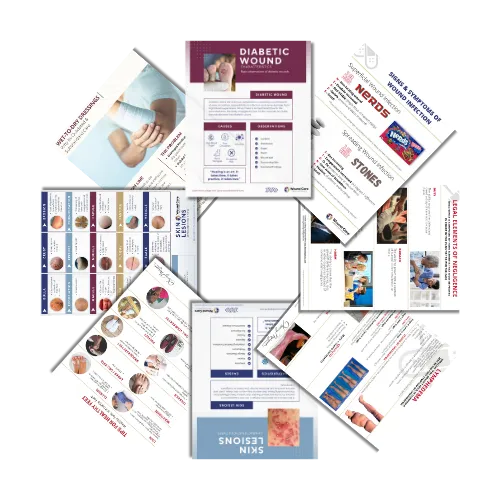
Fall into one of these Categories? We'd Love To Help You Grow!
NURSES
PHYSICIANS
THERAPISTS
CNA/MA
MEDICAL INDUSTRY
HEALTHCARE PROFESSIONALS
HEALTHCARE ORGANIZATIONS
UNLICENSED HEALTHCARE PROFESSIONALS
INTERNATIONAL HEALTHCARE PRO
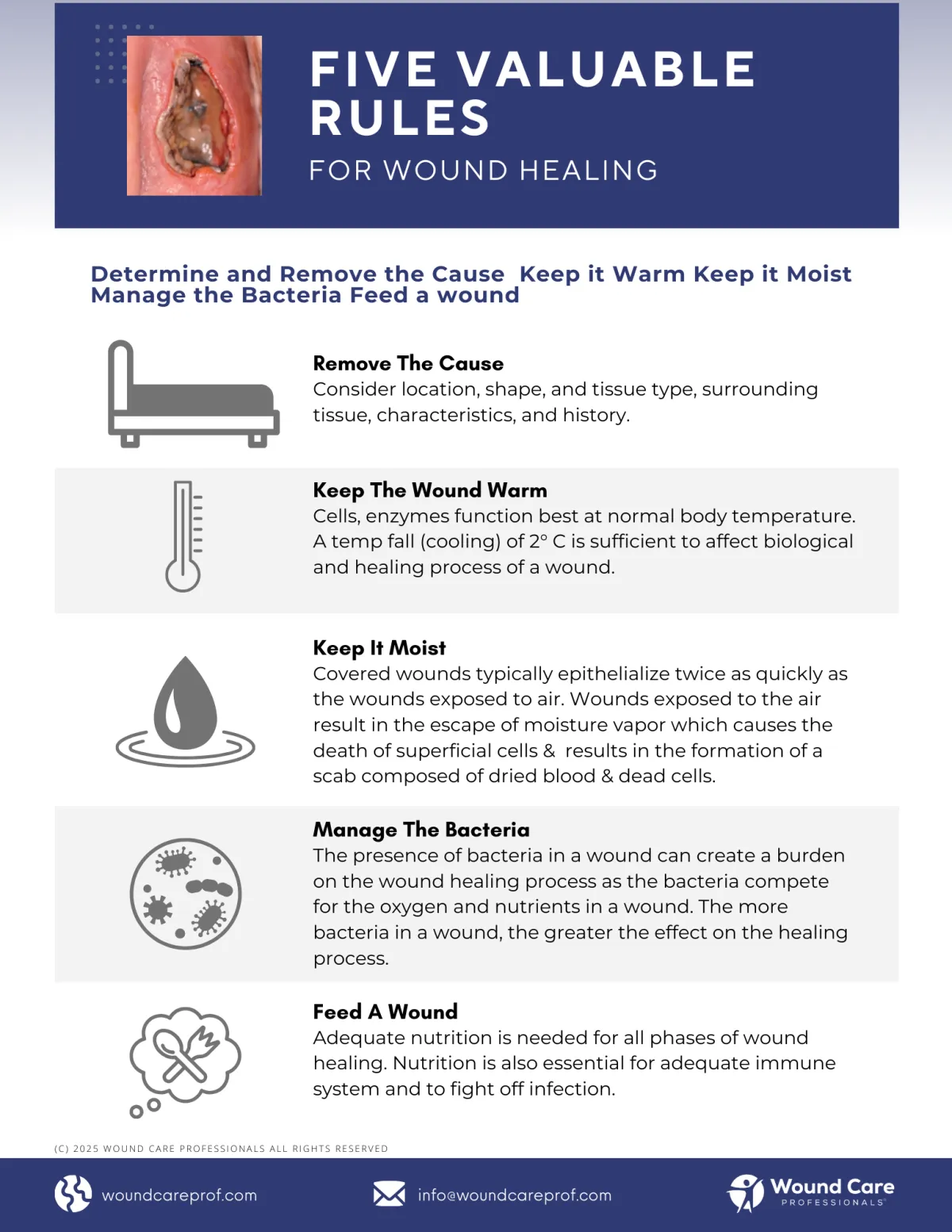
5 Rules for Wound Healing
Master the five key principles: remove the cause, keep it warm and moist, manage bacteria, and nourish the body to create optimal conditions for wound healing and faster recovery.
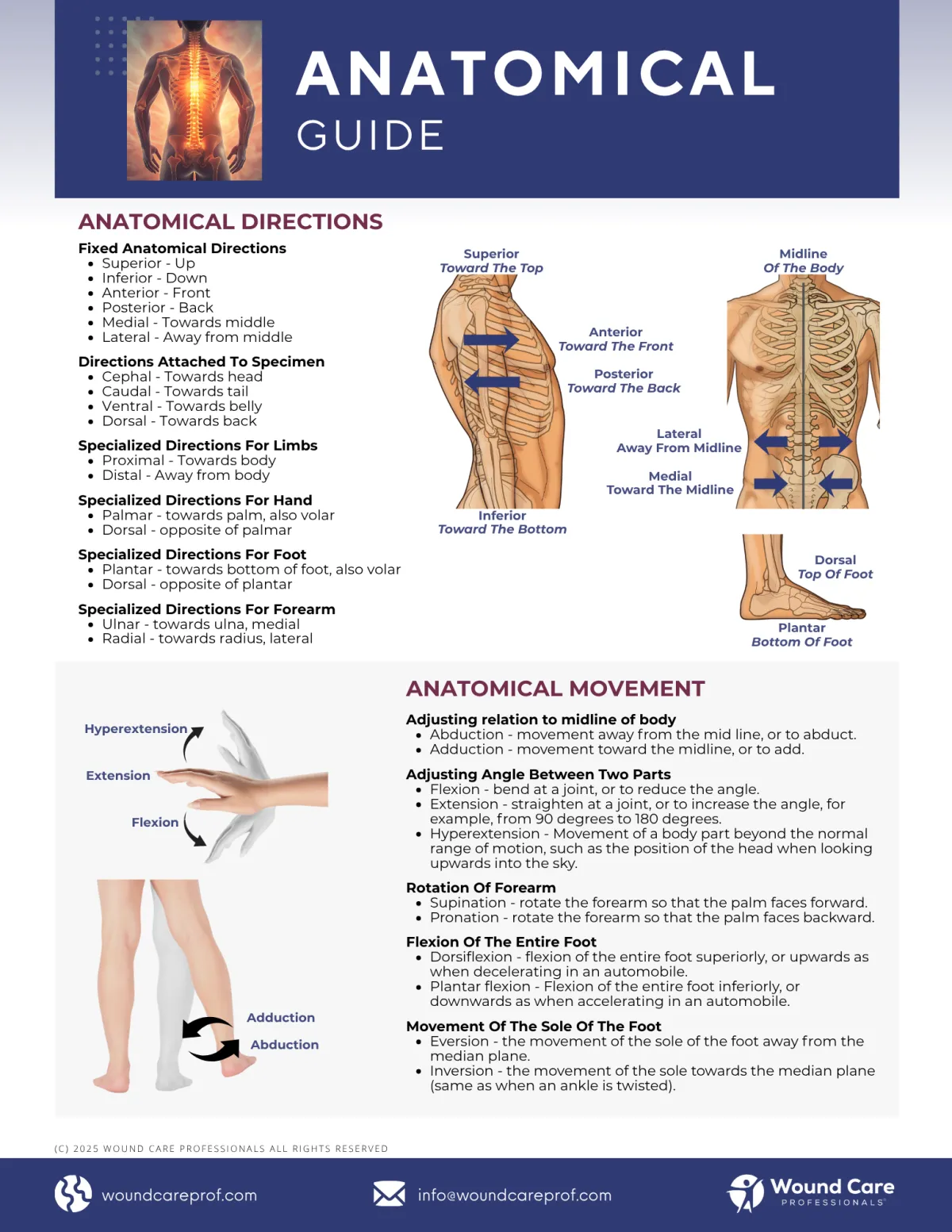
Anatomical Roadmap
This tool simplifies body landmarks, movement and location terms. It supports wound care pros in achieving accurate assessment and consistent documentation.
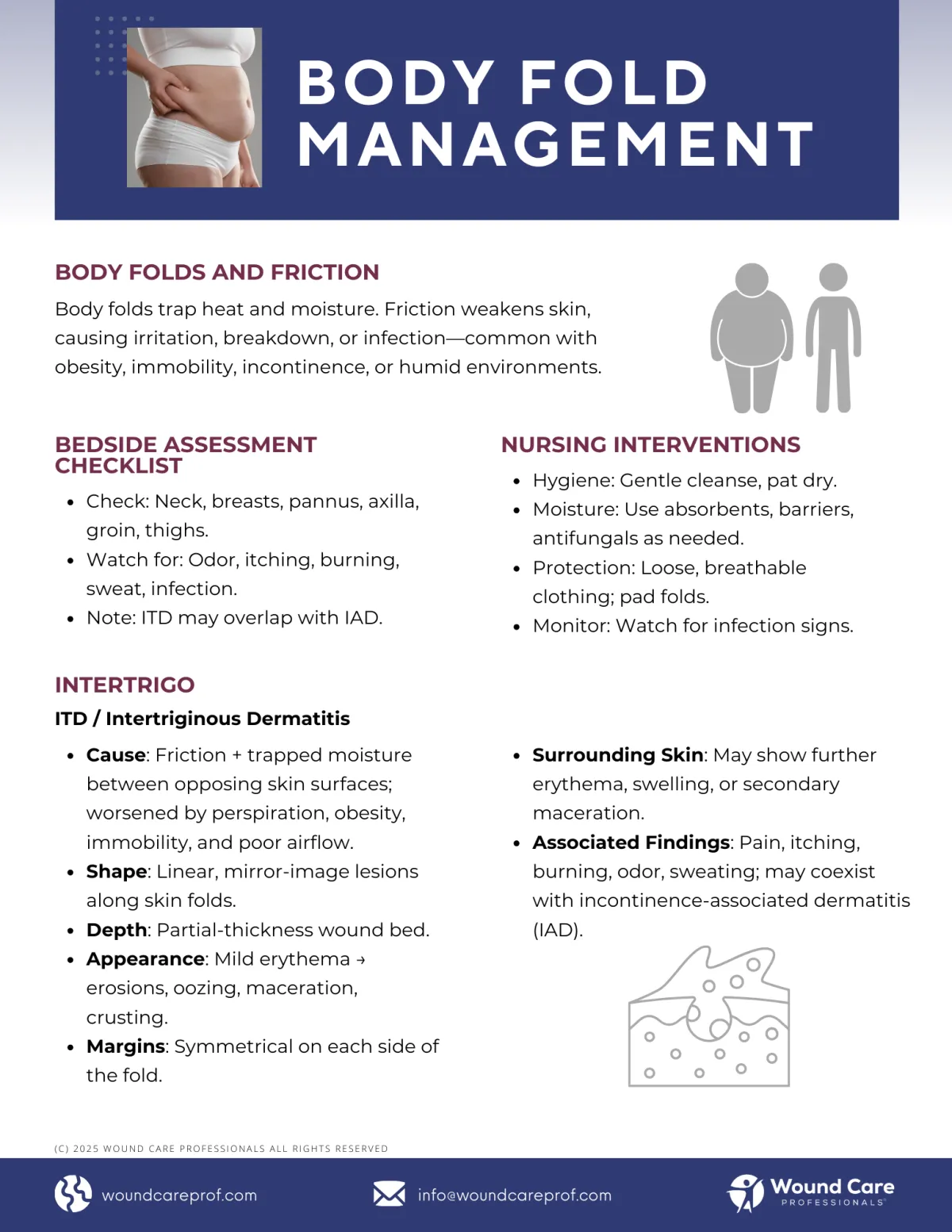
Body Fold Management
Tackle moisture, friction, and skin irritation in body folds with tips to recognize early signs and keep skin healthy through prevention and daily care.
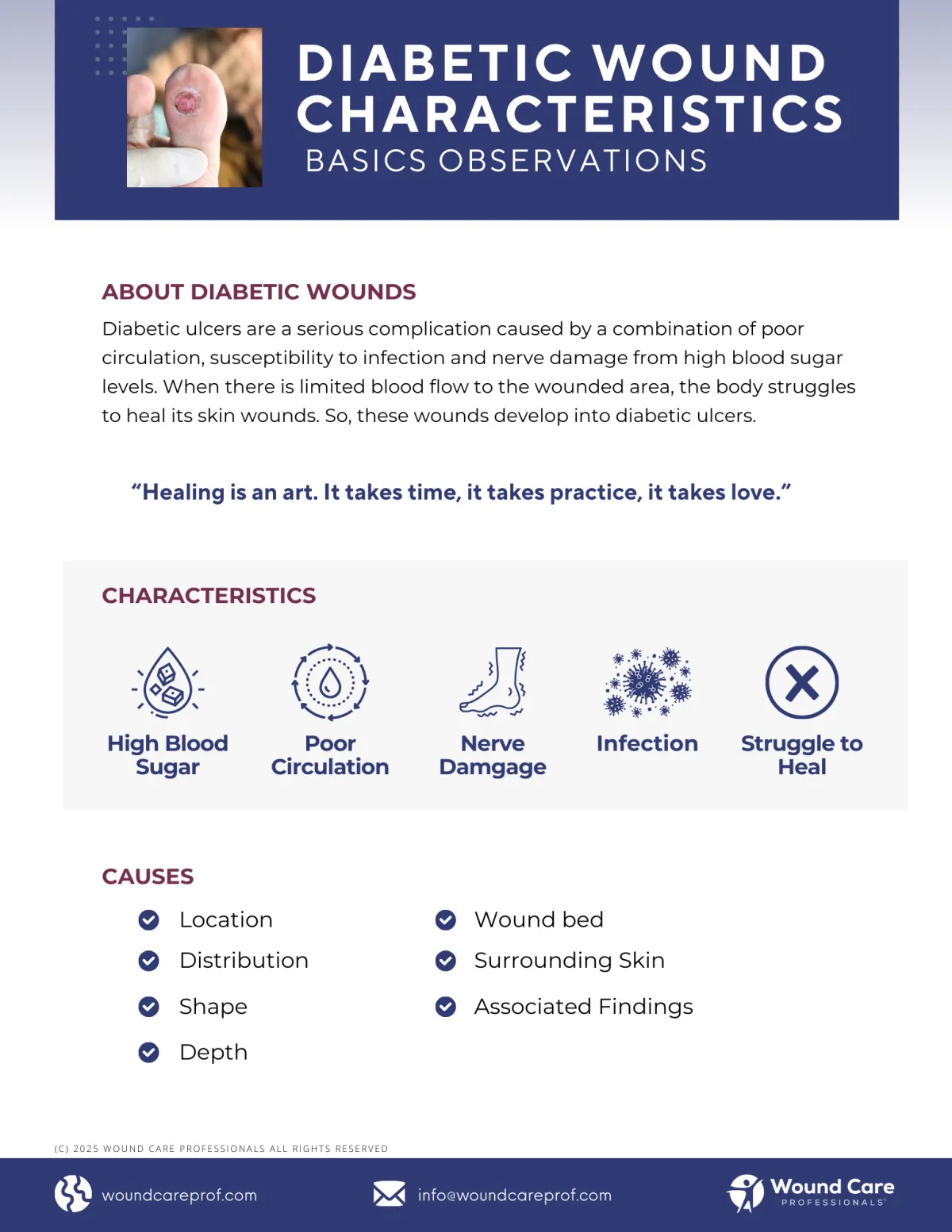
Diabetic Wound
Recognize and assess diabetic wounds with confidence by identifying key indicators, such as callused edges, slow healing, and a high risk of infection.
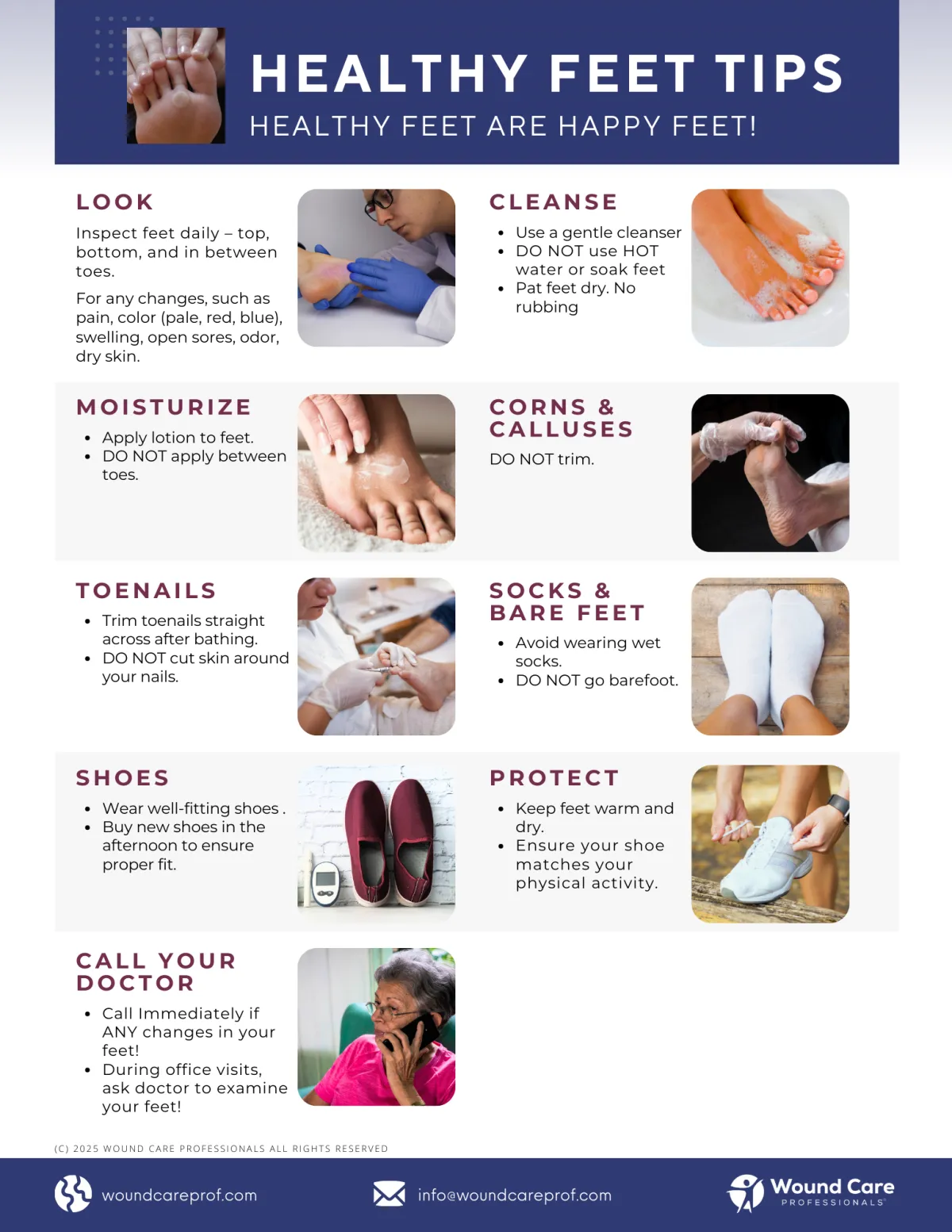
Healthy Feet Tips
Step up your foot care routine—daily inspection, gentle hygiene, and smart shoe choices help prevent complications and protect mobility.
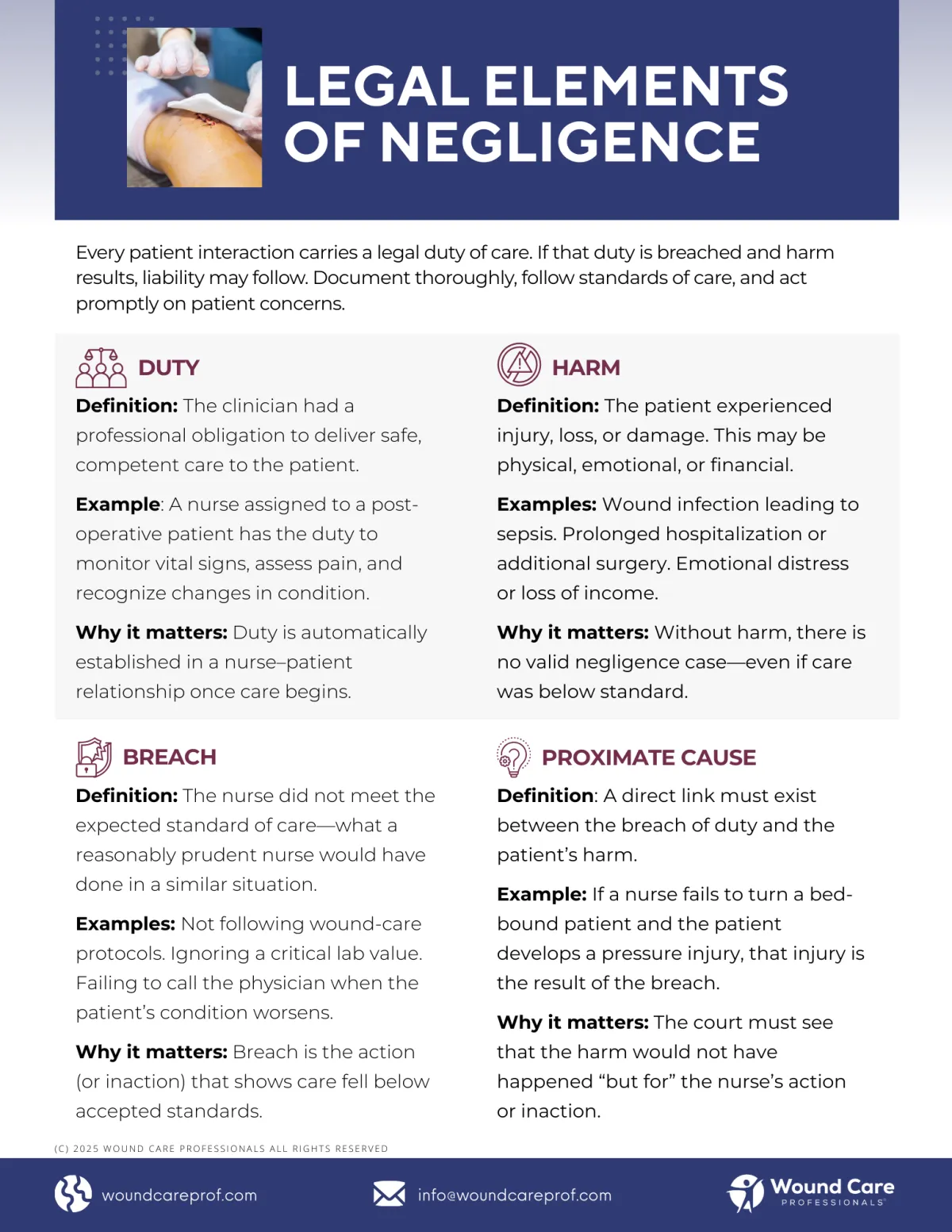
Legal Elements of Negligence
Understand the four legal elements of negligence duty, breach, harm, and proximate cause to reduce liability and improve clinical accountability.
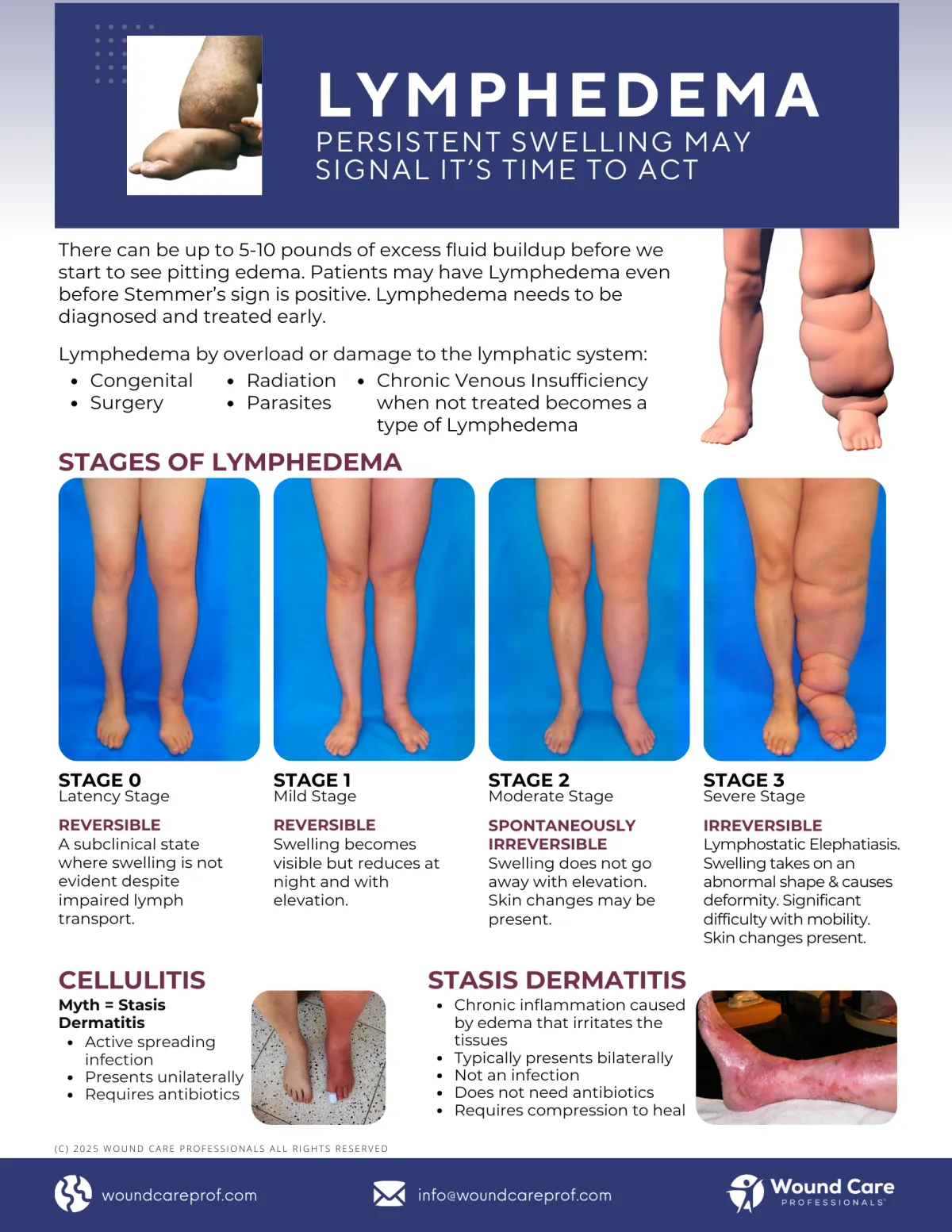
Lymphedema
Learn to recognize and manage lymphedema early. Compression is key, not antibiotics, for reducing chronic swelling and preventing complications.
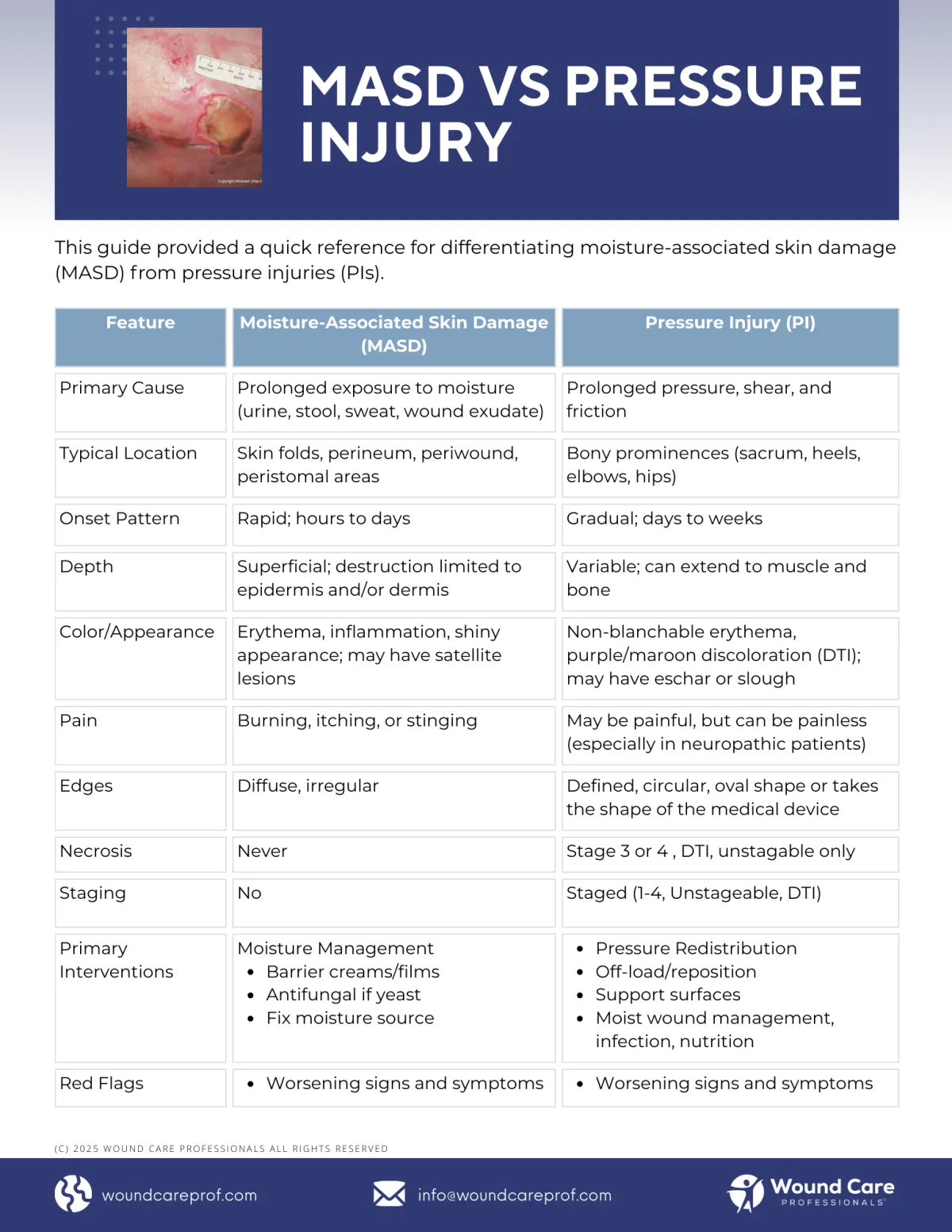
Moisture-Associated Skin Damage vs Pressure Injury
Distinguish MASD from pressure injuries. Learn the key differences in causes, locations, appearance, staging, and interventions, making bedside decisions faster and more accurate.
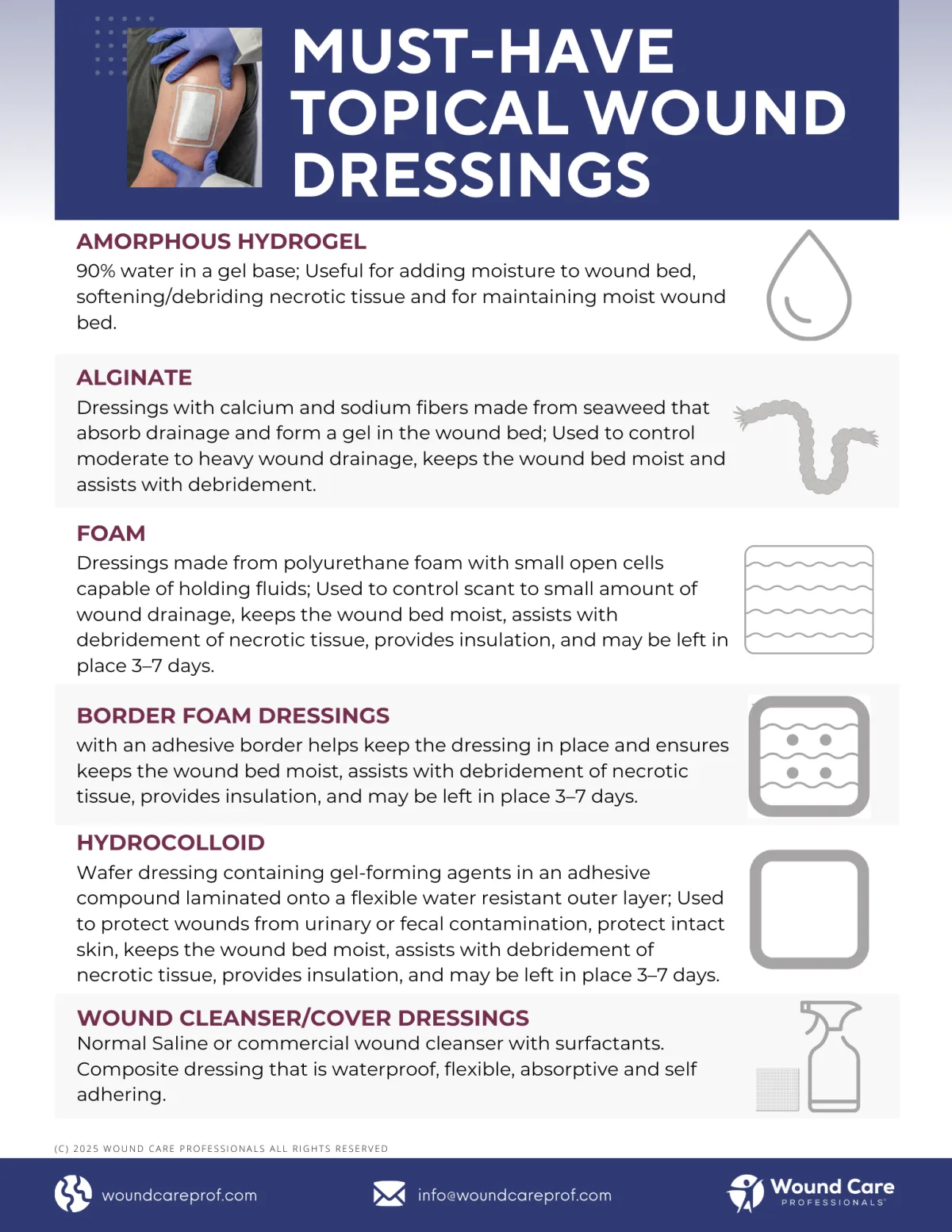
Must-Have Topical Wound Dressings
Your go-to guide for selecting the right dressing. Match product to purpose to manage moisture, speed healing, and protect the wound bed.
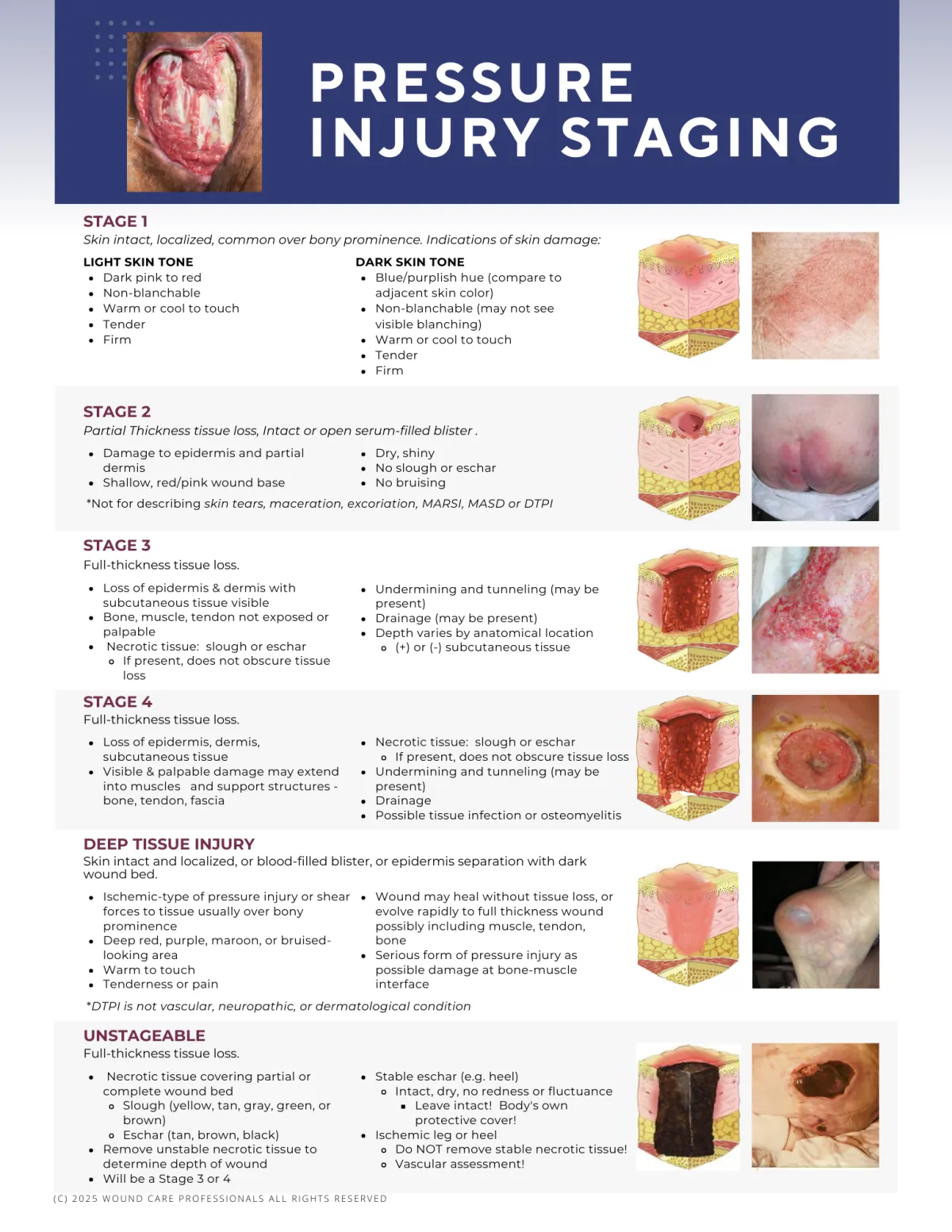
Pressure Injury
Quickly stage pressure injuries from redness to exposed bone. This guide helps you document accurately and act fast to prevent progression.
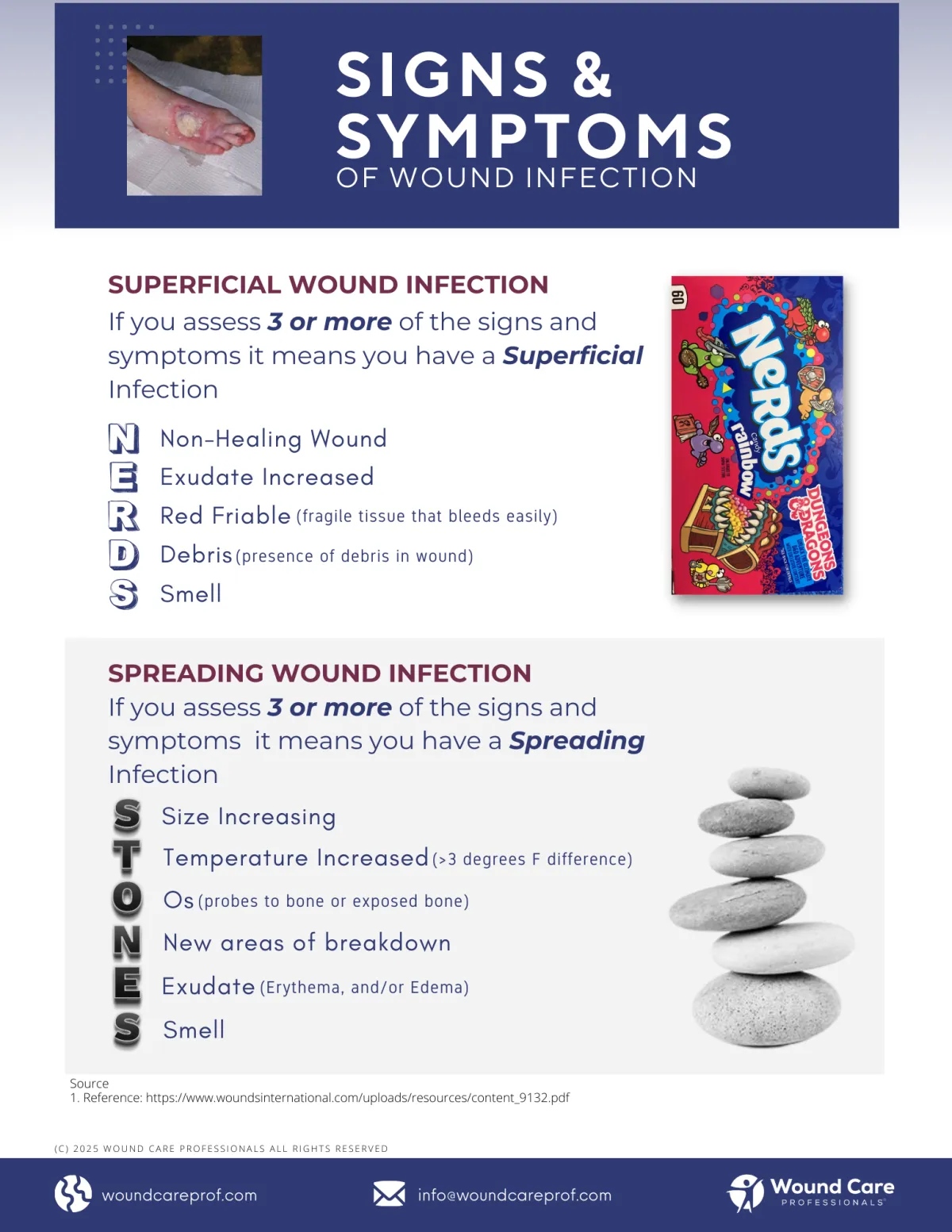
Signs and Symptoms of a Wound Infection
Use visual and clinical signs of infection, such as increased drainage, odor, redness, warmth, and tissue breakdown, to identify and treat wounds early before they worsen.
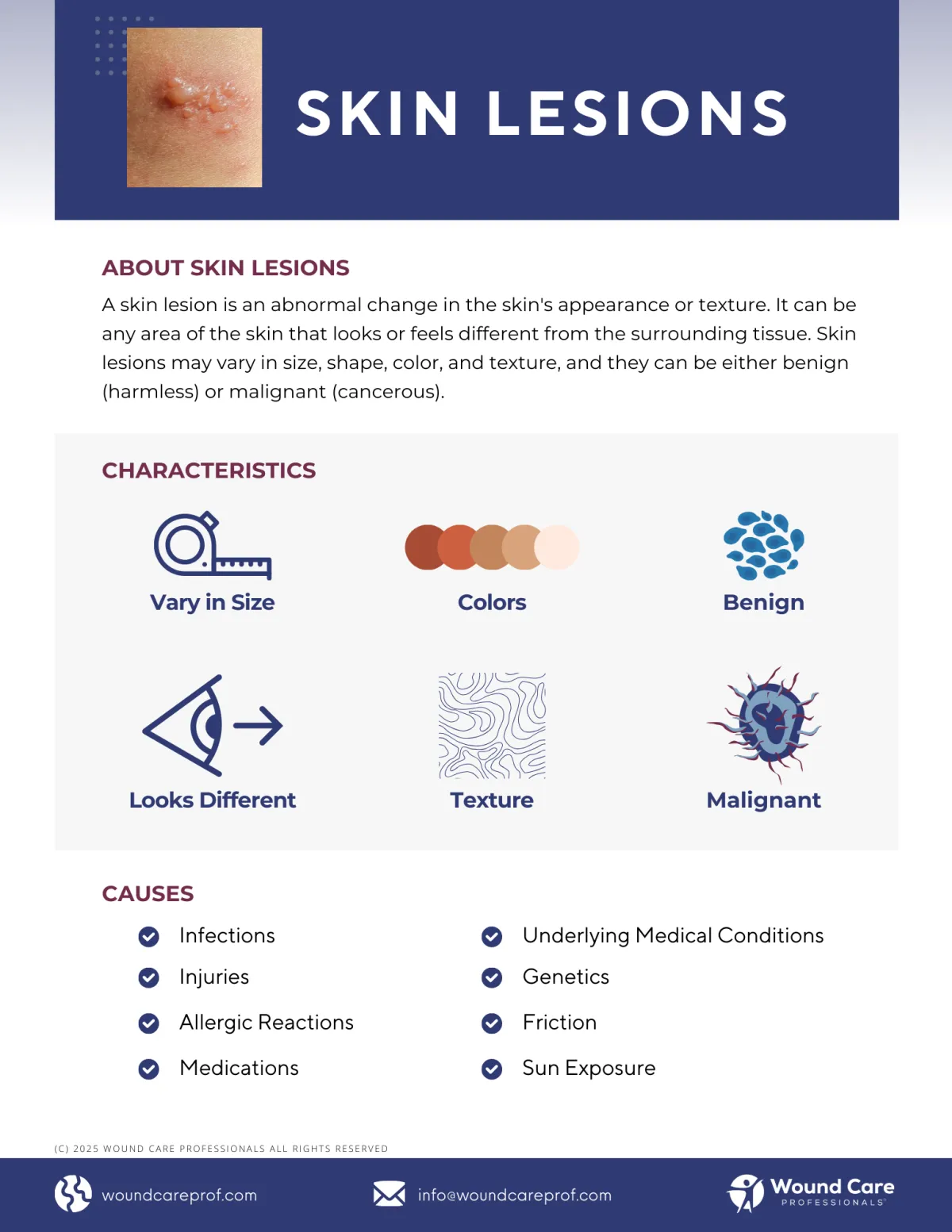
Skin Lesions
Identify skin lesions with confidence using this guide, which explains the key types, appearances, and warning signs for accurate assessment.
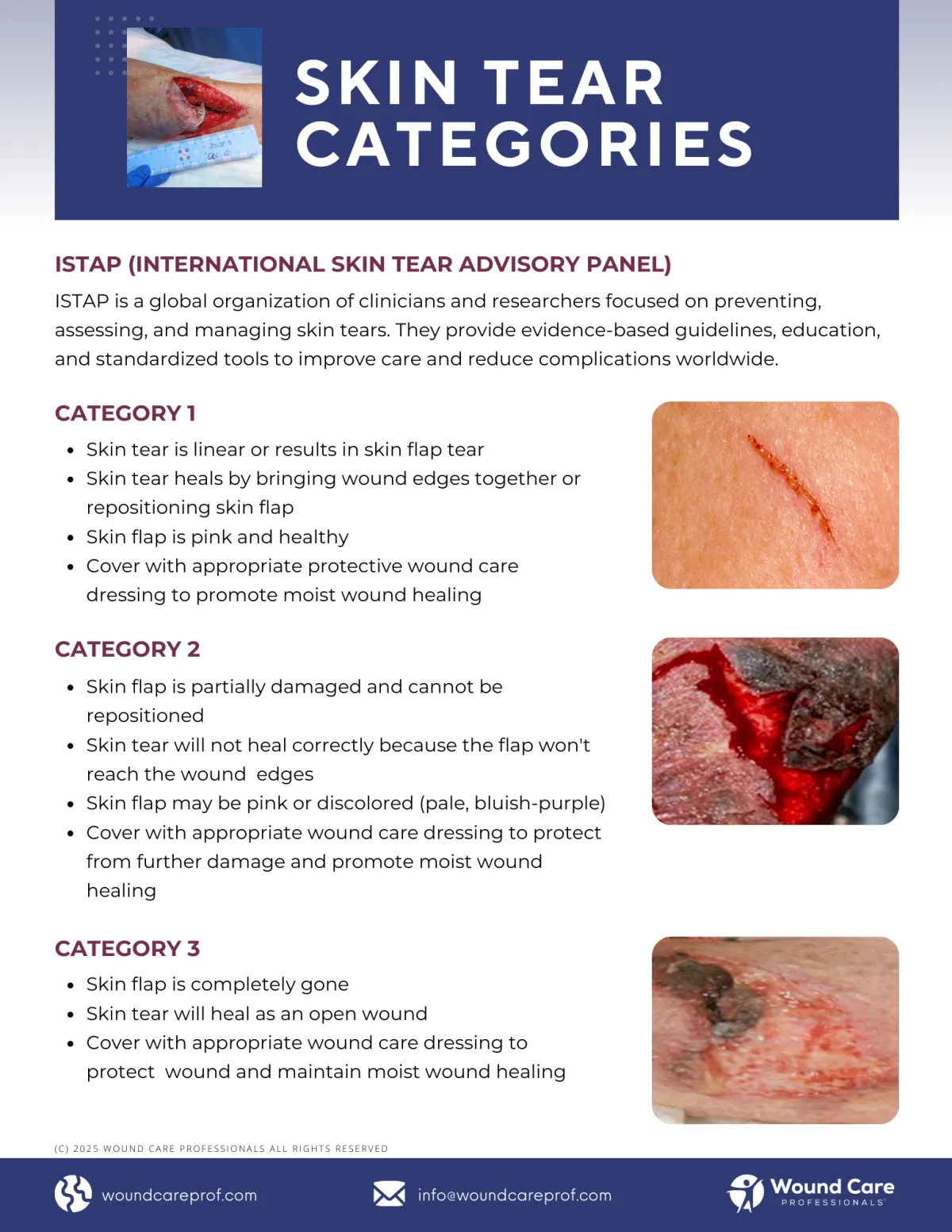
Skin Tear Categories
Classify and treat skin tears by severity from intact to fully missing flaps with clear dressing guidance to support proper healing.
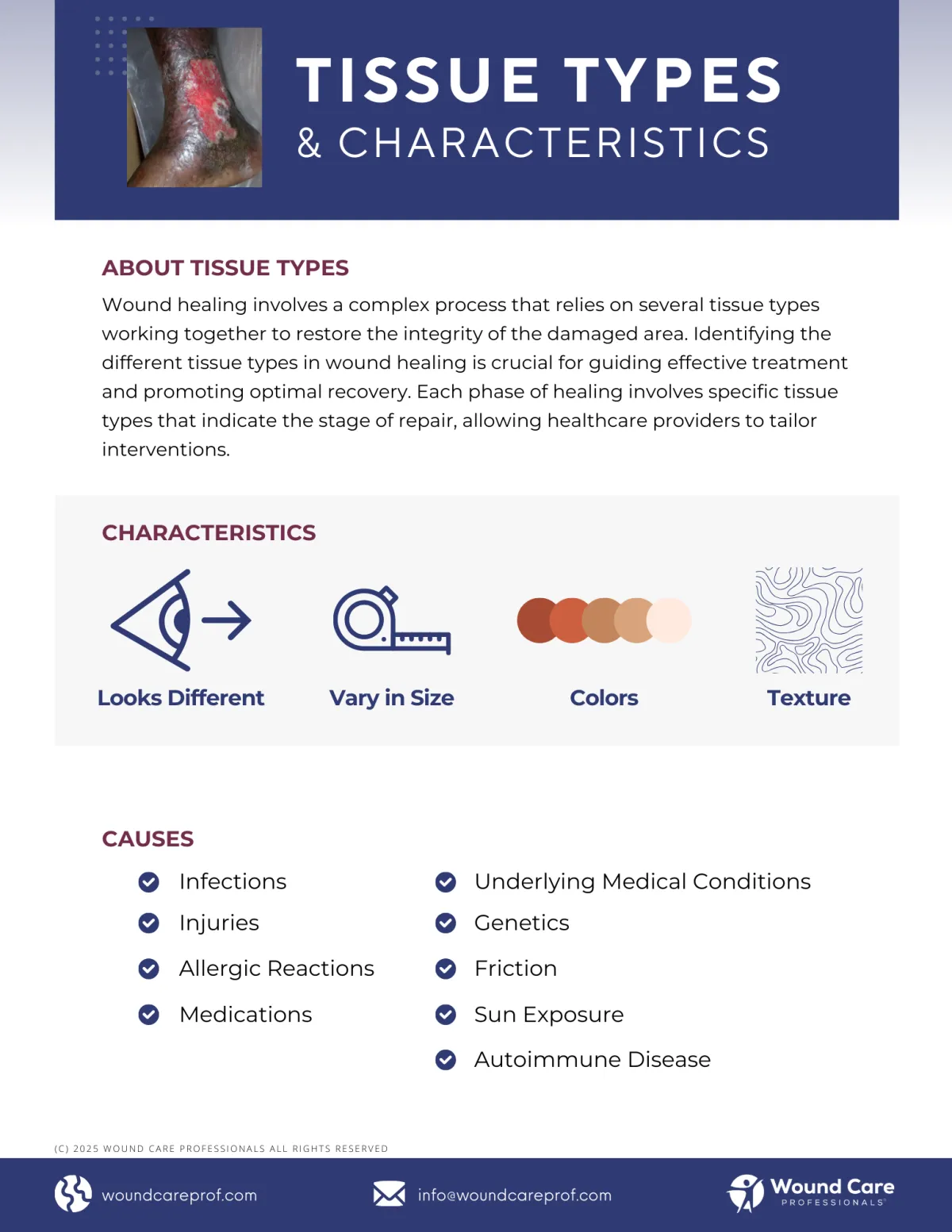
Tissue Types
Essential reference for recognizing granulation, slough, eschar, epithelial tissue, and more. Helps clinicians assess healing stages and guide the right treatment.
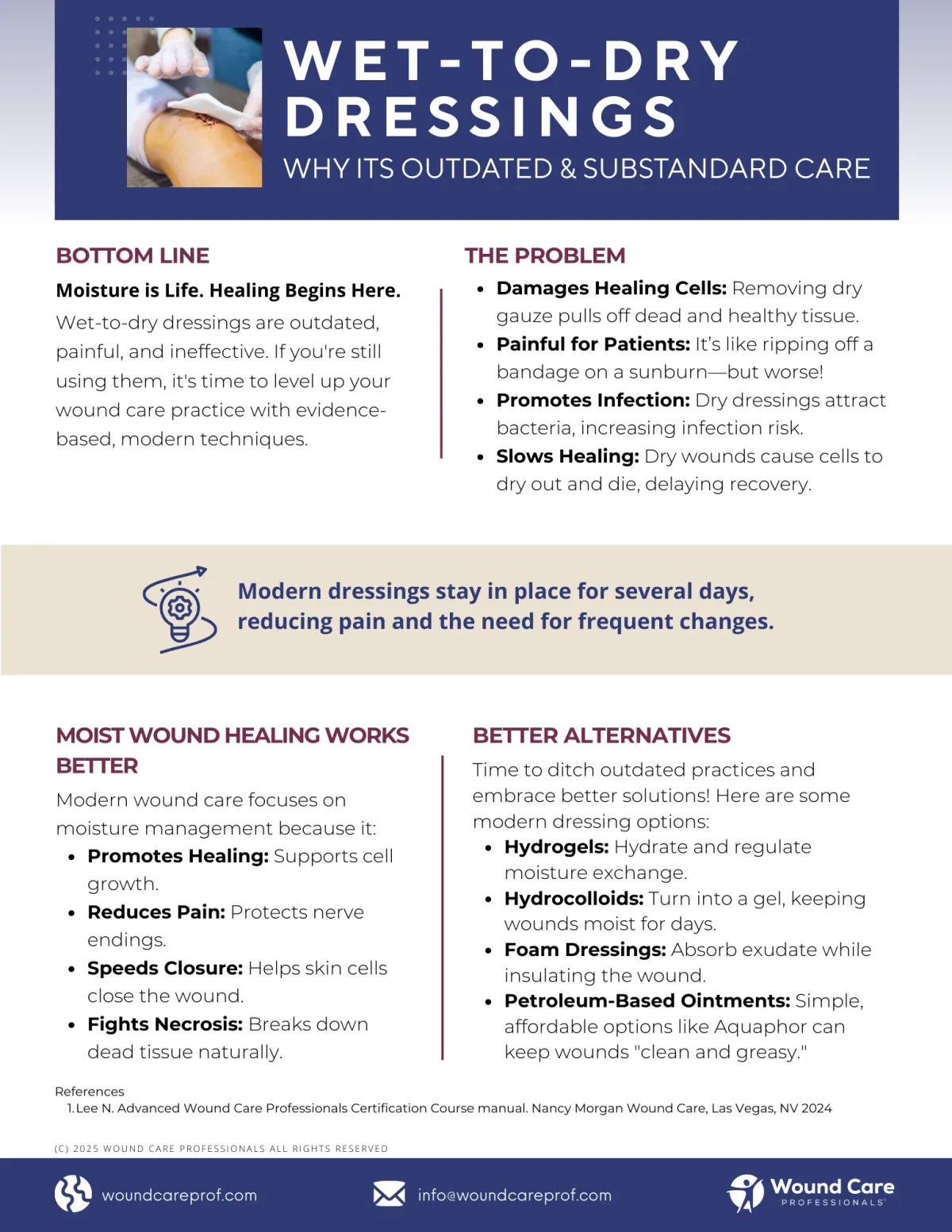
Wet-To-Dry Dressing
Explains why wet-to-dry dressings are outdated, painful, and ineffective while introducing modern, evidence-based alternatives that support moist wound healing, reduce pain, and speed recovery.
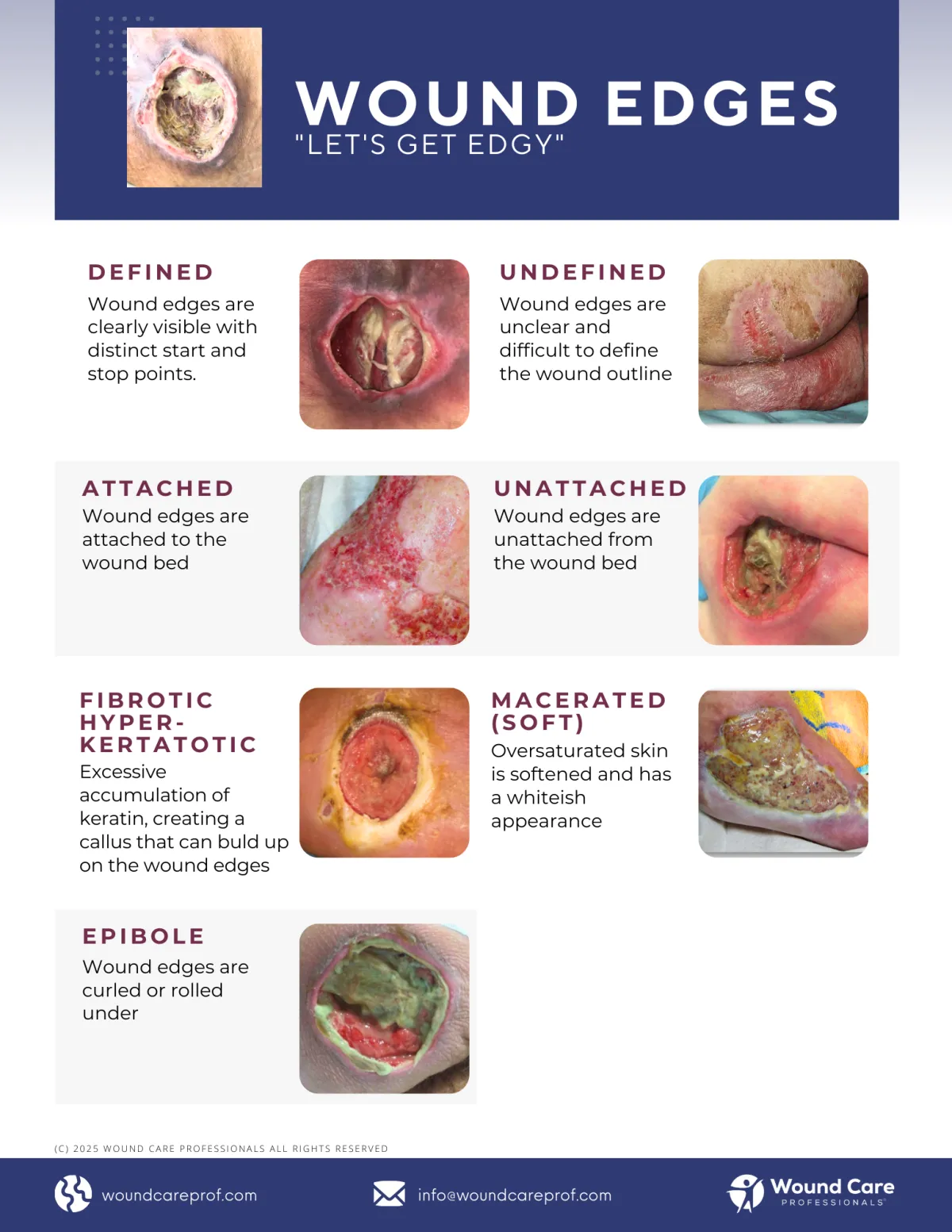
Wound Edges
Get edgy about wound care by using edge appearance to assess healing progress and detect underlying complications early.
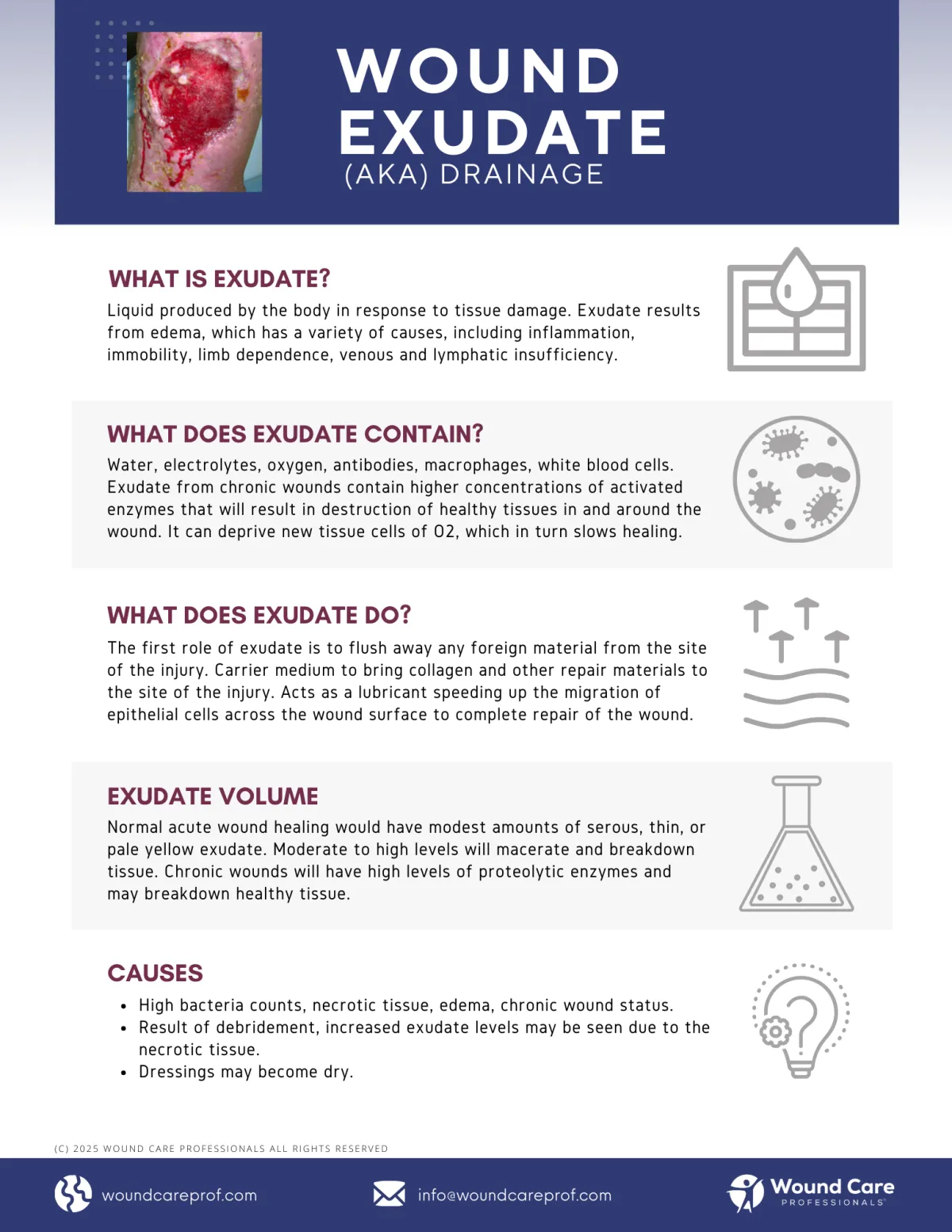
Wound Exudate Drainage
Exudate is fluid released after tissue damage that cleans the wound, delivers repair materials, and supports the healing process.
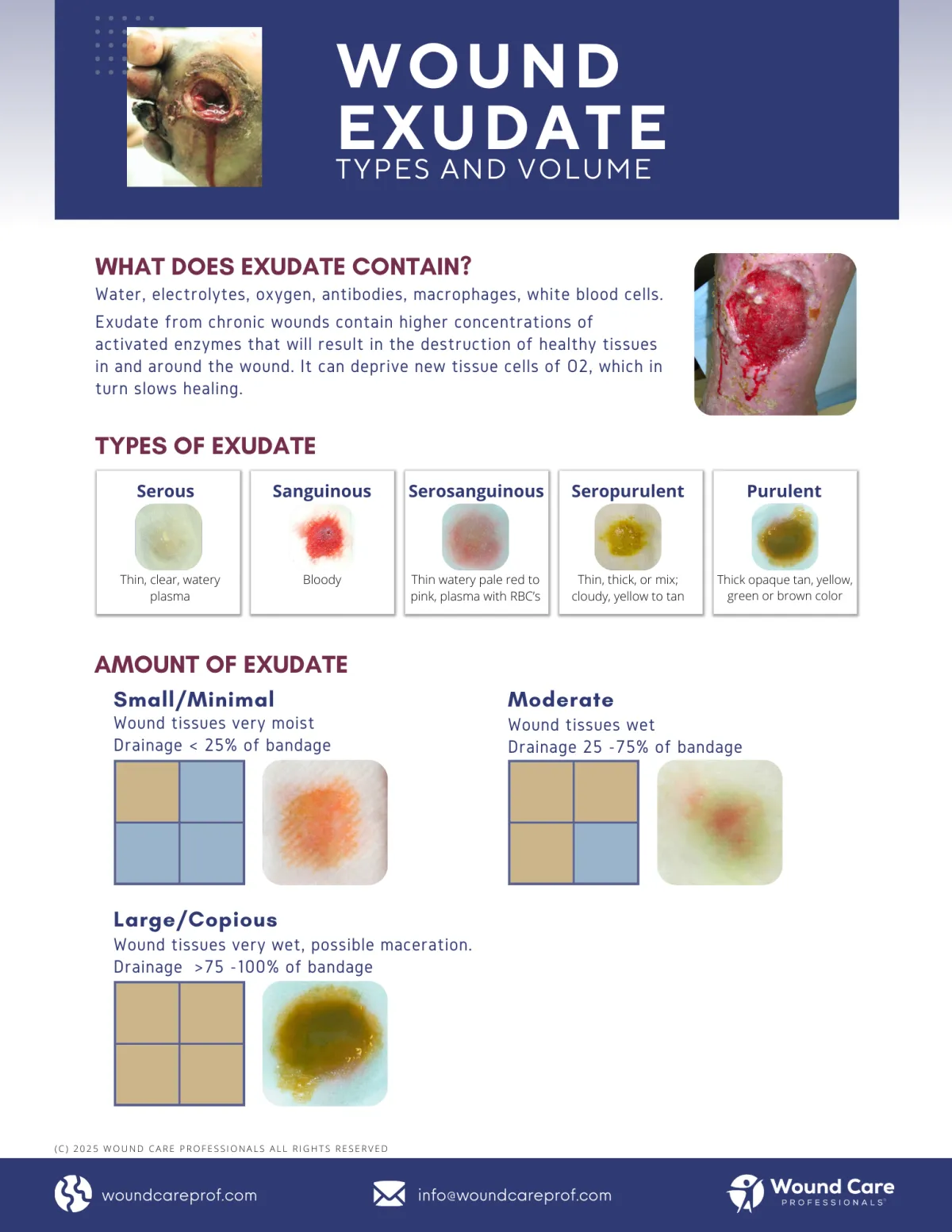
Wound Exudate Types and Volume
Discover how different types of wound drainage, ranging from clear to purulent, indicate healing progress, infection risk, and dressing requirements.
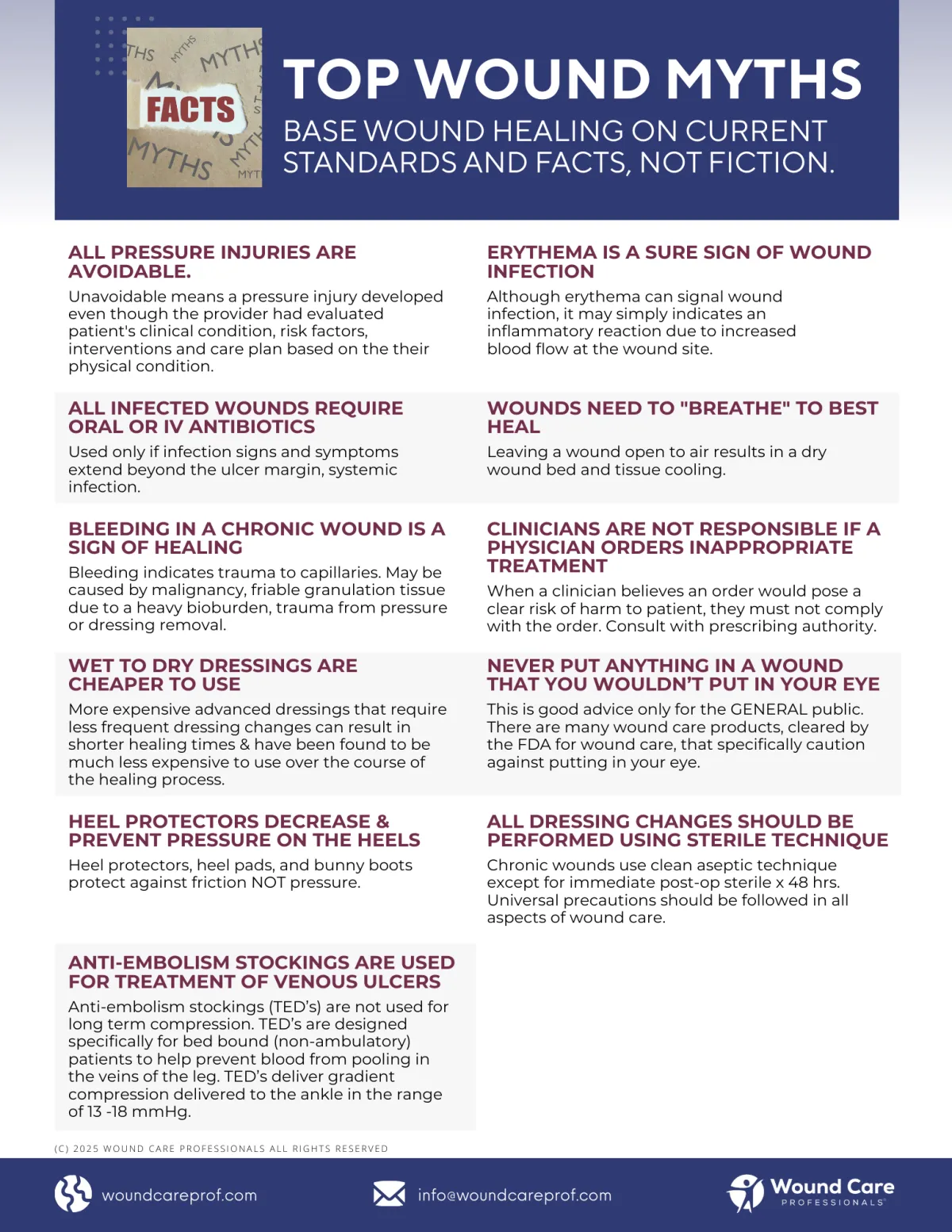
Wound Myths
Clear up common misconceptions like “all wounds need to breathe” or “all infected wounds need antibiotics.” Base care on facts, not fiction.
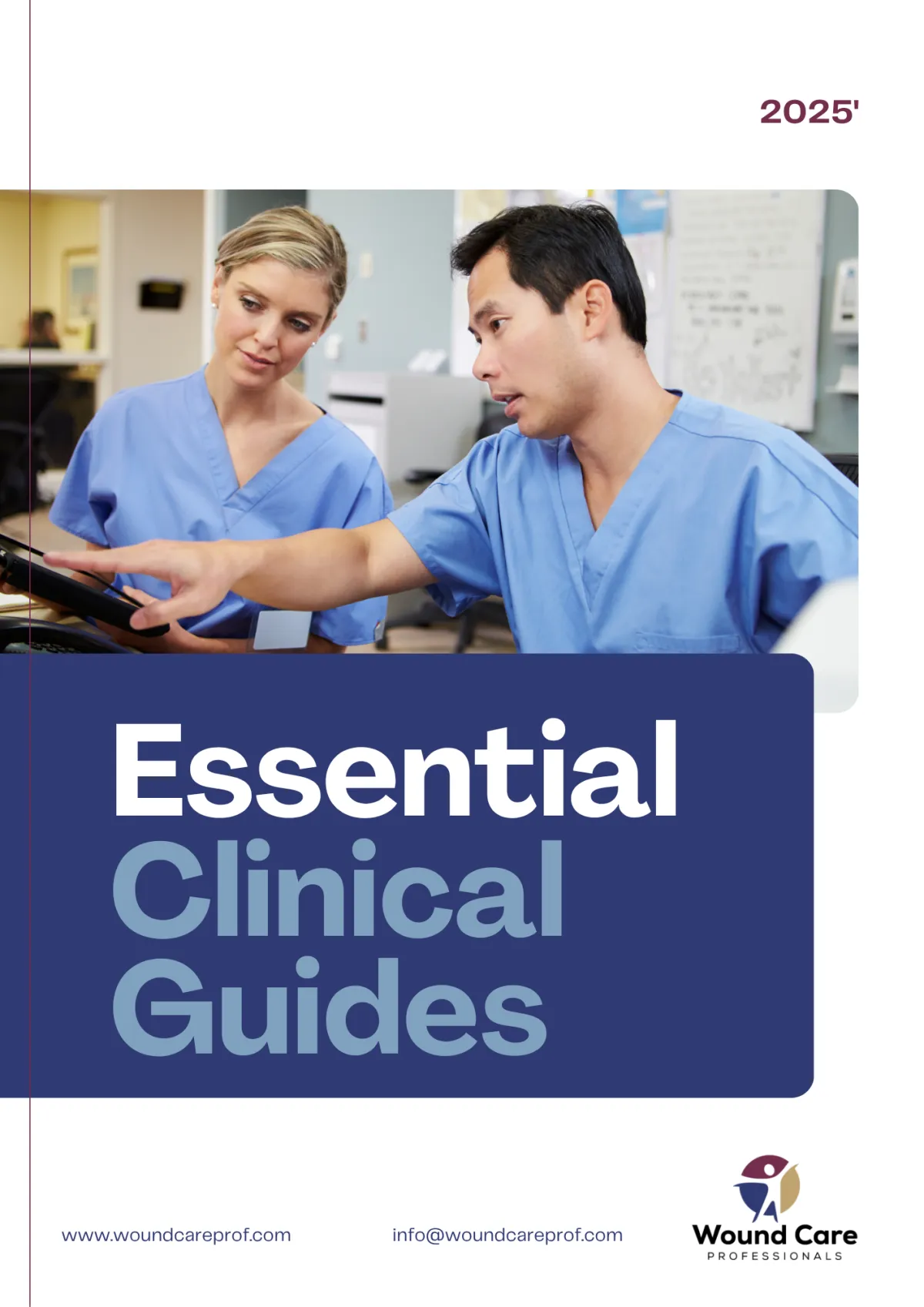
Essential Clinical Guides
Get instant access to all clinical guides—your complete, evidence-based toolkit for confident wound care and better healing outcomes.

COMPANY
LEGAL
CUSTOMER CARE
FOLLOW US
COMPANY
Proverbs 16:3 - Commit your actions to the Lord, and your plans will succeed.
RESOURCES
CUSTOMER CARE
FOLLOW US
Copyright 2025 Indiana, USA. All Rights Reserved.
Check our what our WCP Community Members are saying...
The founder of Wound Care Professionals, Nancy Morgan has been a true inspiration on my journey to furthering my wound care education. I am deeply grateful for the opportunity to learn from WCP and continue to grow in this vital area of healthcare.

Bianca S.
MHA, BA, LVN










